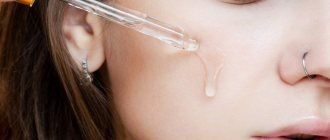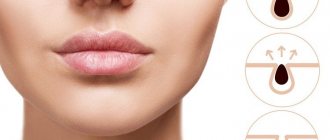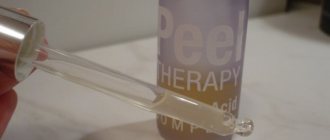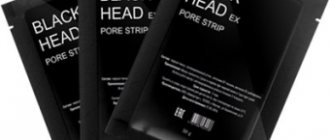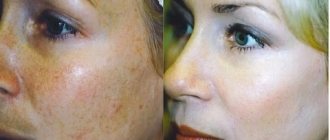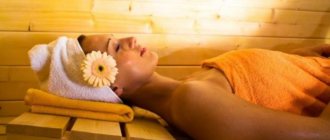Basic properties of salicylic acid45
Salicylic acid belongs to the group of isomeric hydroxybenzoic acids. It has high penetrating ability.
Salicylic acid normalizes sebum production, has a disinfecting and anti-inflammatory effect. It is characterized by slight hydrolysis of lipids, which ensures good cleansing of the skin from dead cells.
In sufficient concentration, the chemical compound is capable of coagulating pathogenic proteins. That is why if you have black spots on your chin*, cosmetologists recommend resorting to a salicylic peeling procedure.
.
Pumpkin peeling DermaQuest
The main pumpkin peeling performs the function of atraumatic cleaning, dissolves sebaceous plugs and cleanses pores, making them narrow. Indicated for thicker, non-sensitive skin, without broken barriers and without a tendency to redness and irritation.
Composition of DermaQuest Pumpkin Peeling
The basis of the peeling is pumpkin pulp, enriched with various active ingredients.
- Pumpkin pulp 40% is a source of natural AHAs, Vitamin A, enzymes, pyrogens and antioxidants. Keratolytic and steaming effect, lymphatic drainage and improvement of microcirculation.
- Salicylic acid 2% - dissolves comedones, antiseptic, reduces sebum production.
- Lactobacilli and pumpkin enzymes 3% - enzymes loosen the stratum corneum and break down both sebum on the surface of the skin and the comedones themselves. Lactobacilli process the substrate into lactic acid - cleansing and restoring the natural moisturizing factor.
- Sweet Orange stem cells – skin rejuvenation, firming and smoothing. Activates the synthesis of type IV collagen.
- Vitamin E – antioxidant effect.
- Lactic acid 3% – moisturizes, has a mild keratolytic effect, restores the barrier function of the skin.
- Glycolic acid 3% - in this percentage works for hydration, as an antiseptic and a light keratolytic.
Why is pumpkin peeling so effective at dissolving even the densest and largest blackheads?
How does DermaQuest Pumpkin Peel work?
- Steaming effect - activates blood circulation, helps to expand pores and soften the contents;
- Dissolves blackheads - a special composition of acids and enzymes penetrates the pores and dissolves sebaceous plugs and keratinized scales;
- Loosens and delicately exfoliates dead skin scales from the surface of the skin;
- The composition includes natural vitamin A from pumpkin pulp - regulates the functioning of the sebaceous glands, slows down the formation of new blockages;
Thus, pumpkin peeling is not only an atraumatic cleansing of the skin, but also the prevention of subsequent contamination and filling of pores.
Who is allowed and prohibited from peeling with salicylic acid? 45
Many visitors to beauty salons think about the question of how to get rid of skin imperfections? In the absence of contraindications, cosmetologists recommend undergoing an acid peeling procedure. It is indicated for acne (in the absence of inflammatory elements), seborrheic dermatitis, photoaging, pigmentation. But during periods when the sun is more active, it is better to avoid the procedure. The optimal time for the procedure is the autumn-winter period.
Acid peeling is contraindicated if you have:
- inflammatory rashes;
- injuries, cuts, burns and other damage in the affected area;
- herpes in acute form;
- increased skin sensitivity;
- taking glycemic drugs;
- individual intolerance to the components of the product.
What is the most effective facial peeling for comedones?
An experienced specialist always evaluates the effectiveness of professional products based on the composition and percentage of active ingredients.
Mandelic acid - effectively dissolves blackheads, prevents the appearance of inflammatory elements and inhibits the development of new blockages.
Read more about mandelic acid in chemical peels here .
5 Benefits of Mandelic Acid
- Kerato- and comedolytic action - water- and fat-soluble acid, freely penetrates into pores, dissolves and evacuates their contents.
- The mandelic acid molecule is large and does not penetrate into the deep layers of the skin. Gently eliminates hyperkeratosis without disrupting the barrier function of the skin. Mandelic acid does not irritate the skin and does not cause excessive peeling.
- Normalizes the functioning of the sebaceous glands - sebum production decreases, the filling of pores with sebaceous secretion decreases and blackheads do not form.
- Antibacterial effect - prevents acne and inflammatory processes.
- The brightening effect is important if there is a tendency to the appearance of age spots on the skin.
Reasons for the popularity of the technique45
The main advantage of salicylic peeling is its versatility. It can be performed on the face and different parts of the body. The procedure is easy to perform and has full control by the cosmetologist. The positive aspects that become noticeable after salicylic peeling include the following:
- activation of regeneration processes;
- normalization of sebum secretion;
- improvement of skin structure and color;
- eliminating the initial signs of aging;
- cleansing pores;
- reducing the risk of acne, comedones, etc.
However, before performing the procedure, you must consult with a cosmetologist and dermatologist who will assess the condition of the skin and help you choose the right care.
How does the procedure work?
Laser exposure can be painful, so the salon service involves the use of an anesthetic. The whole process takes 30-60 minutes and includes the following steps:
- Cleansing, makeup removal.
- Treatment first with an antiseptic, then with an anesthetic.
- Eye protection with special glasses.
- Distribution of carbon solution penetrating deep into the epithelium.
- Grinding problem areas - at this moment the mask with carbon comes out of the pores, pushing out impurities.
- Applying burn cream.
After the session, the skin will turn red, there will be a burning sensation and pain, swelling is possible - the symptoms will go away after 2 days. The specialist will definitely remind you that during the day you cannot use cosmetics and wash your face with tap water. For one month you will have to give up visiting the bathhouse, sauna, or beach.
Salicylic peeling as a remedy for blackheads*45.13
Depending on the pH and concentration of the active substance, the effect on the skin can occur at the superficial or mid-superficial level. The cosmetologist selects the composition individually for each patient.
Superficial peeling involves the use of salicylic acid with a concentration of 15-20% with an acidity level in the range of 2.0-3.2 pH. It is used to care for oily, acne-prone skin.
The mid-surface option involves the use of active components in a concentration of 25-30%, while the acidity level of the composition reaches 1.3-2.0 pH. This peeling removes dead skin cells of the epidermis, activates the processes of cell restoration and renewal, and stimulates the production of collagen and elastin. As a result of the mid-surface action of the acid, the skin becomes more elastic, dense, and fine wrinkles are eliminated.
Cosmetologists recommend carrying out the salicylic peeling procedure in courses. The duration of the session, activity and concentration of chemicals are selected by the cosmetologist strictly individually. In the presence of open and closed comedones, 5-7 sessions are usually performed with a frequency of no more than once every 1-2 weeks. It is noteworthy that salicylic acid is used in liquid form for facial care, and a paste-like active substance is used for cosmetic procedures on the body.
Which peeling to choose
A common misconception is that any superficial peeling is suitable for cleansing the skin. This is not true; moreover, an incorrectly selected composition can activate the sebaceous glands, increasing sebum production, skin shine and pore contamination.
What peelings are needed:
- Only based on fat-soluble acids capable of penetrating inside the pores (lactic and glycolic acids are not suitable).
- Atraumatic with minimal irritating effect , because oily skin’s reaction to irritation is increased activity of the sebaceous glands and increased sebum flow.
Read below about what kind of peeling is necessary for skin with comedones.
How to remove blackheads* on the chin?
The cosmetologist decides whether salicylic peeling is right for you. The procedure can be performed exclusively in cases where acne is in remission and there are no inflammatory rashes on the skin. A dermatologist treats acne. He prescribes medications according to the severity of acne, the extent of the process, the patient’s age and other factors.
For mild to moderate acne, a dermatologist may prescribe azelaic acid, for example, Azelic®5,9 gel. The drug should be used 2 times a day after washing, applied to dry skin9.
*open comedones
Our specialists
| Metelkina Natalia Evgenievna Dermatocosmetologist | Tskhovrebova Tinatin Guramovna Cosmetologist | Kuzovkina Nadezhda Viktorovna Cosmetologist-esthetician |
| Moreva Liliana Mikhailovna Dermatovenerologist, cosmetologist of the highest category | Kukhtina Olga Gennadievna Cosmetologist - esthetician |
Call right now at 8 (473) 254-11-11 or come to us at Voronezh, st. Krasnoarmeyskaya 17.
Reviews
Reviews about peeling, its chemical compositions and methods are very contradictory. Some women note the complete uselessness of the glycolic procedure, but praise procedures with fruit acids. Many people note that the spots went away quickly after the procedure, but the effect is only temporary if the skin is prone to comedones. Based on reviews on the Internet, you can see many dissatisfied posts about the condition of the skin after the procedure. It takes up to 10 days to heal, and all this time the face peels, swells and turns red. Almond peeling is considered one of the most effective and gentle, after which there is no peeling, and the effect is visible immediately. Some women do not believe in expensive salon procedures and do facial cleansing according to proven “folk” recipes.
Precautions and possible consequences
Consequences after the procedure may be expected or unexpected.
Expectations include mild redness of the treated area, swelling, and the face may peel off.
Unexpected complications include complications after cleaning. This is a long-term, persistent redness of the skin, severe swelling, rash, and ulcers on injured areas. Self-medication for complications can lead to scars on the face.
To minimize the consequences, it is necessary to take precautions during the cleansing and after the procedure. You should not peel during menstruation, breastfeeding or pregnancy.
The cosmetologist must have sufficient qualifications so as not to violate the technology of the procedure. The most common mistakes : incorrect speed of application of the solution, violation of the order of application of the composition, its uneven layer, incorrect duration of application.
Before peeling, the patient must additionally prepare the skin for the procedure. This may be the use of special cosmetics on the advice of a cosmetologist. It is recommended to take a course of antiviral medications to prevent herpes from developing after the procedure.
If the skin is not properly cared for after cleansing, irritation may occur and allergies may develop. Allergic reactions to the composition of the drug occur less frequently.
Redness of the skin is normal after cleansing the face.
If skin care is correct, the redness will quickly go away. The face may peel off; you should not tear off the films so as not to injure the skin. This can lead to scars and mechanical damage. Swelling around the eyes and mouth goes away on average 3 days after cleaning. The skin may darken. This effect disappears within 7–10 days after peeling. After the manipulations, the face is sensitive to the sun from 7 days to 12 months.
The expected consequences do not need to be treated; they go away on their own. The main thing is to properly care for your skin during this period.
Let's sum it up
Peeling effectively deals with blackheads, wrinkles, and skin blemishes. After the procedure, the skin looks younger . But before cleansing, you need to consult with a cosmetologist who will advise you on how to properly prepare for cleansing, choose the type of cleansing, and select the concentration of active substances. In the salon, the qualifications of the specialist are no less important.
An incorrectly performed procedure can lead to scars, suppuration, and burns.
“Home” remedies are safer and less caustic, so they can be used without fear for the results. But such compositions are gentle and less effective.
